Here I use my expert knowledge of South Africa to highlight the best things to do in Johannesburg. It’s a city which took me some time to love, but look beyond its obvious problems and you’ll find a vibrant forward-facing city packed with attractions just as I did.
Johannesburg, Jo’burg, Jozi, eGoli. Call it what you will, the reputation of South Africa’s biggest city won’t have passed you by. But high crime rates – now thankfully on the turn – aren’t the end of the city’s story.
Plus, as the site of the country’s primary international airport, there’s a good chance you’ll end up in Johannesburg at least overnight. It would be a real shame to waste that time locked up in a hotel in one of the city suburbs.
Born out of the discovery of gold in 1896, Johannesburg fell into decline with the ‘white flight’ of the transition between apartheid and multiparty democracy a hundred years later. As families moved out to the suburbs, undesirables moved in.
Now however, communities are taking back the streets, as demonstrated by redevelopment of Newtown and Maboneng. So while I do urge caution – as I do anywhere in the world – don’t let the headlines stop you checking out the current buzz around Johannesburg’s best things to do.
1. Apartheid Museum
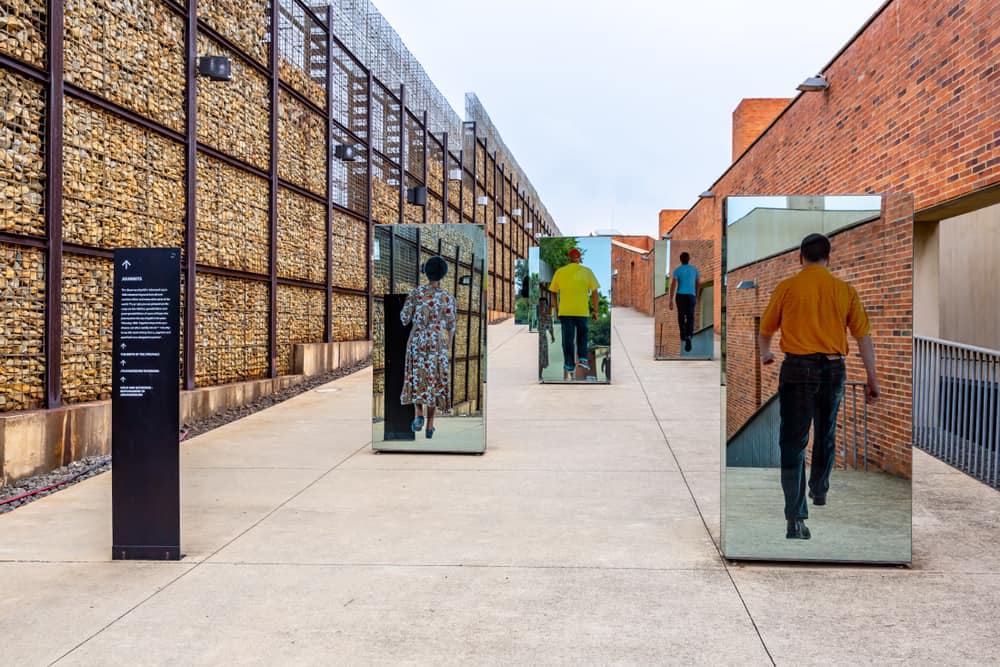 Source: Finn stock / shutterstock
Source: Finn stock / shutterstockOpened in late 2001, the Apartheid Museum is located midway between Johannesburg’s CBD (Central Business District) and Soweto. Part of the Gold Reef City amusement park, its prison-like structure houses the foremost study of the country’s former policies of racial segregation.
Both hard-hitting and touching, the realities of apartheid are brought to life through cleverly thought-out curation. This includes having two entrances, with visitors randomly split between them.
Inside, the exhibits and displays don’t shy away from 40 years of events, including the Sharpeville Massacre and Soweto Uprising, days that led to the deaths of hundreds of innocent civilians.
2. Johannesburg Art Gallery
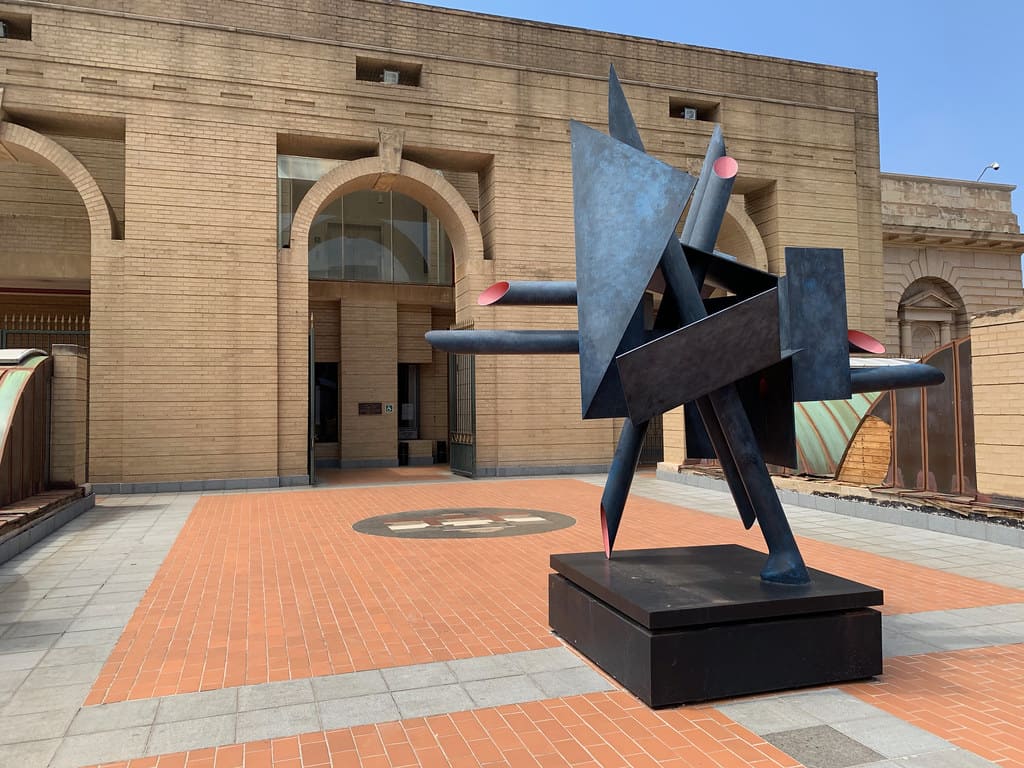 Source: hragv / Flickr | CC BY-ND
Source: hragv / Flickr | CC BY-NDRight at the heart of Jo’burg in Joubert Park, Johannesburg Art Gallery has a collection larger than any other similar museum in Africa. Containing 15 connected gallery spaces and a small sculpture garden, its exhibits range from 17th century Dutch works to modern homegrown art.
Although the gallery has its fair share of well-known names, including Rodin, Picasso, and Moore, the main reason to visit is to learn more about South African art. The gallery was the first in the country to purchase a work by a black artist – Gerard Sekoto’s Yellow Bricks in 1940. Additional names to look out for include Jacobus Pierneef, Sydney Kumalo, and Walter Battiss.
3. Newtown
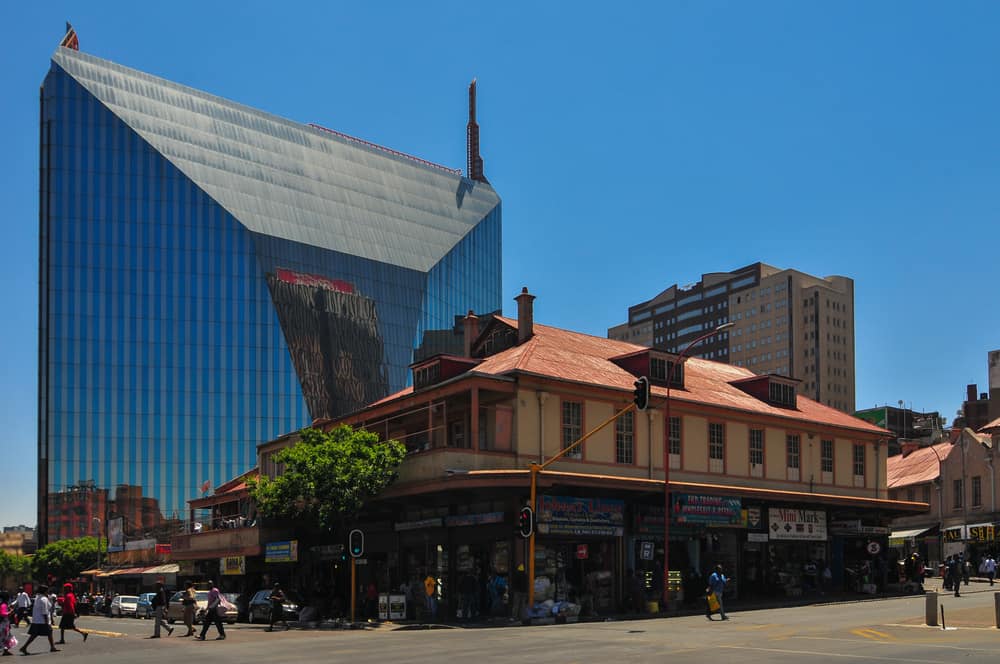 Source: Felix Lipov / shutterstock
Source: Felix Lipov / shutterstockJust south of Johannesburg’s main train station (the largest anywhere in Africa), Newtown isn’t all that new after all. Dating to the founding of the city in the late 1800s, and then known as Brickfields, it therefore has several historically important buildings, including Turbine Hall.
The pleasantly quiet streets of Newtown are known for their performance spaces, which range from The Market Theater to the Carfax live music venue. It’s also the location of the child-friendly Sci-Bono Discovery Center science museum and The Workers’ Museum.
4. Constitution Hill Human Rights Precinct
 Source: Sopotnicki / shutterstock
Source: Sopotnicki / shutterstockThe seat of the Constitutional Court of South Africa, Constitution Hill is no dry courts complex. Instead, it’s a structure dating back to the earliest days of Johannesburg. A fort turned prison turned museum, it’s walls have incarcerated names including Mahatma Gandhi and Nelson Mandela.
Made up of three main buildings, the Old Fort, Women’s Jail (or Gaol), and Number Four (or Native Prison), the museum plays another important part in recording the devastating effects of apartheid. There’s a café filled with tasty treats, alongside a perpetual Flame of Democracy lit by Mandela on the fifteenth anniversary of South Africa’s new constitution in 2011.
5. Johannesburg Botanical Gardens
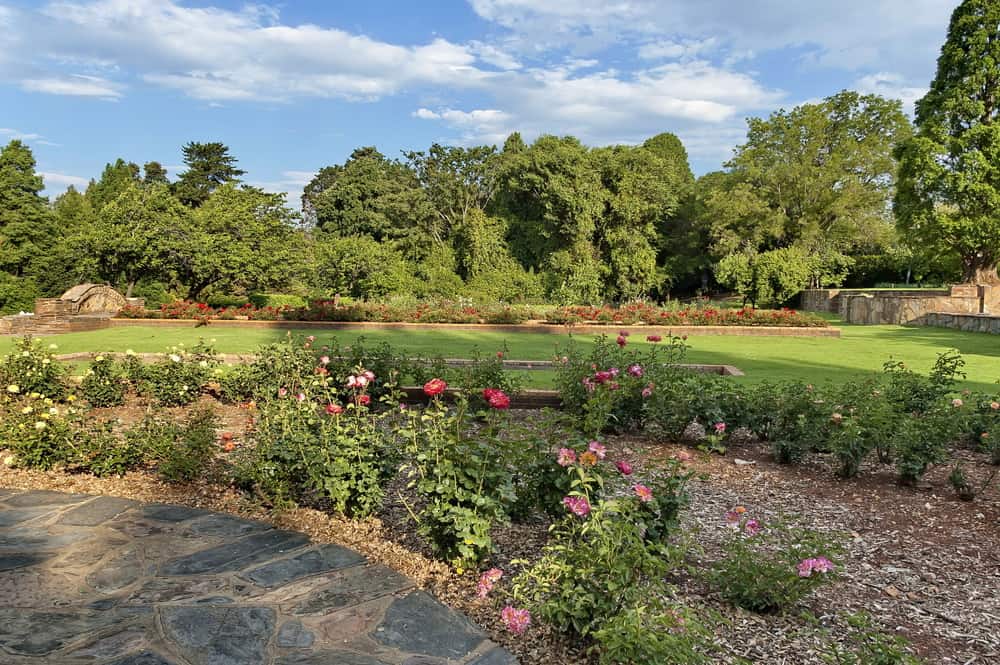 Source: Ilko Iliev / shutterstock
Source: Ilko Iliev / shutterstockCovering an area of 81 hectares, Johannesburg Botanical Gardens wasn’t set up until 1969. Since then, an area of grasses used as a driving range for golfers has been converted into a much-loved recreation area.
Divided into a number of small gardens, visitors will find an arboretum of trees from around the world, a succulent garden of 85 species, and Shakespeare garden, with herbs mentioned in the bards plays. That’s in addition to a rose garden and reservoir created by the Emmarentia Dam.
6. Soweto
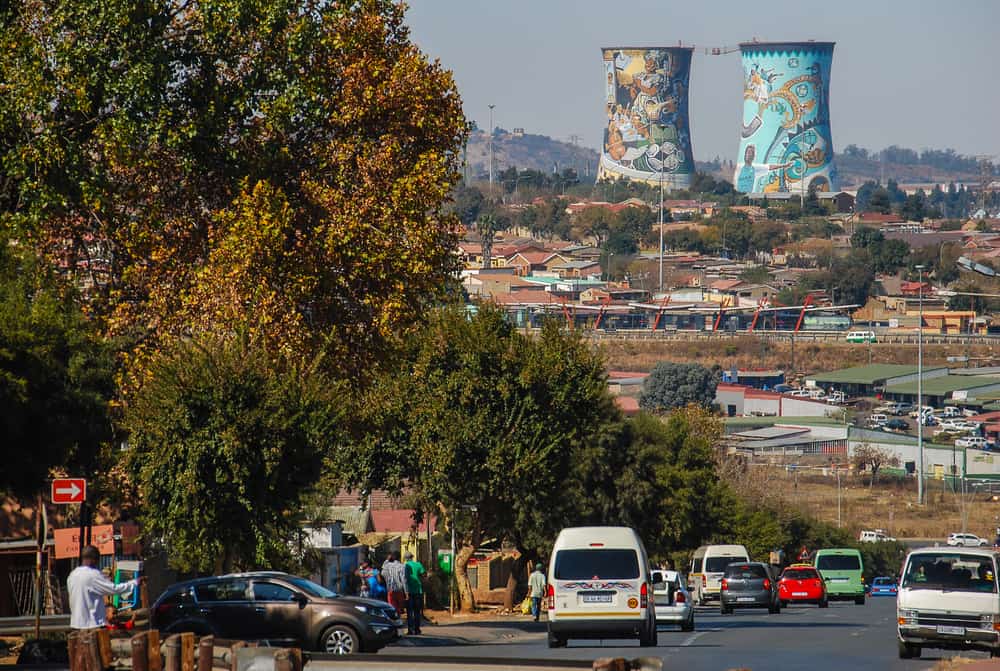 Source: PrakichTreetasayuth / shutterstock
Source: PrakichTreetasayuth / shutterstockSoweto, once short for the South-West Townships, was created to house non-white Johannesburg residents outside of the city center. The scene of various anti-apartheid actions, including the Soweto Uprising of 1976, it today contains several important landmarks.
Best explored as part of an organized tour, Soweto’s landmarks start with Walter Sisulu Square. A wide grassed square, it acts as an open-air museum detailing the creation of the Freedom Charter – the principles put forward for a democratic South Africa. Elsewhere, there’s the Mandela House Museum, and the 33 story high Orlando Towers. Covered in bright murals, these former power station cooling towers now make for one of the world’s most exciting bungee jumping spots.
7. Origins Center
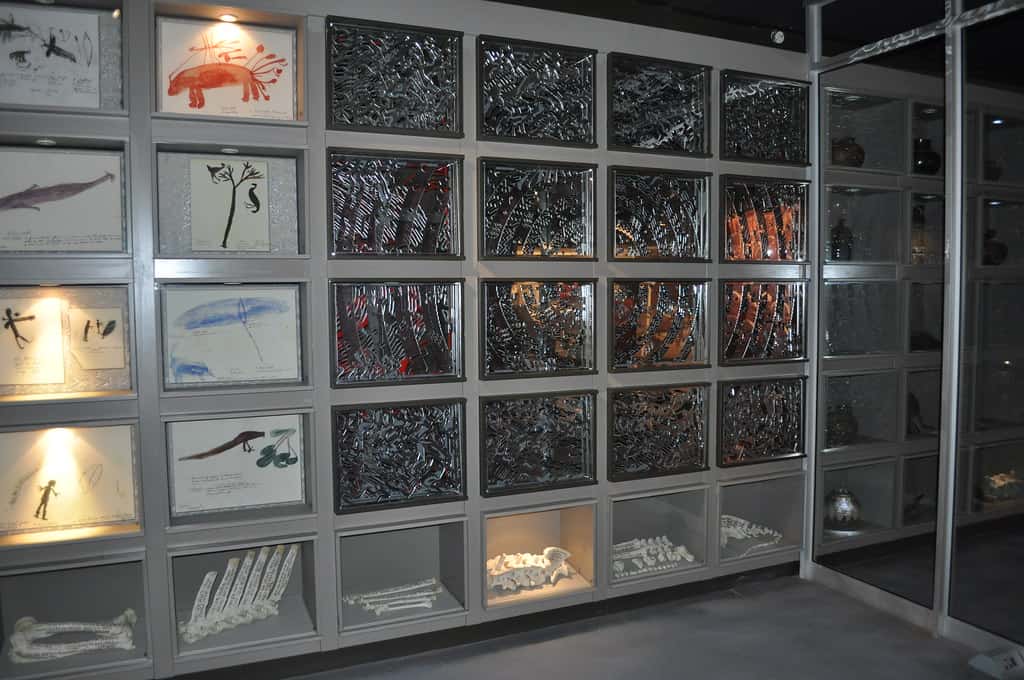 Source: Raymond June / Flickr | CC BY-ND
Source: Raymond June / Flickr | CC BY-NDSouth Africa’s history isn’t limited to apartheid, or even European colonization from the 1650s onwards. At the Origins Center, it’s possible to step back more than two million years. Dedicated to the journey of human evolution, this museum helps to unravel not only our biological evolution, but also our development of art and culture.
Focusing on humans from southern Africa, the Origins Center protects an impressive array of rock art for future generations. Many belong to the San, the people who inhabited much of South Africa before the arrival of Europeans. Other exhibits include stone tools, all within an impressive state-of-the-art museum space.
8. Maboneng
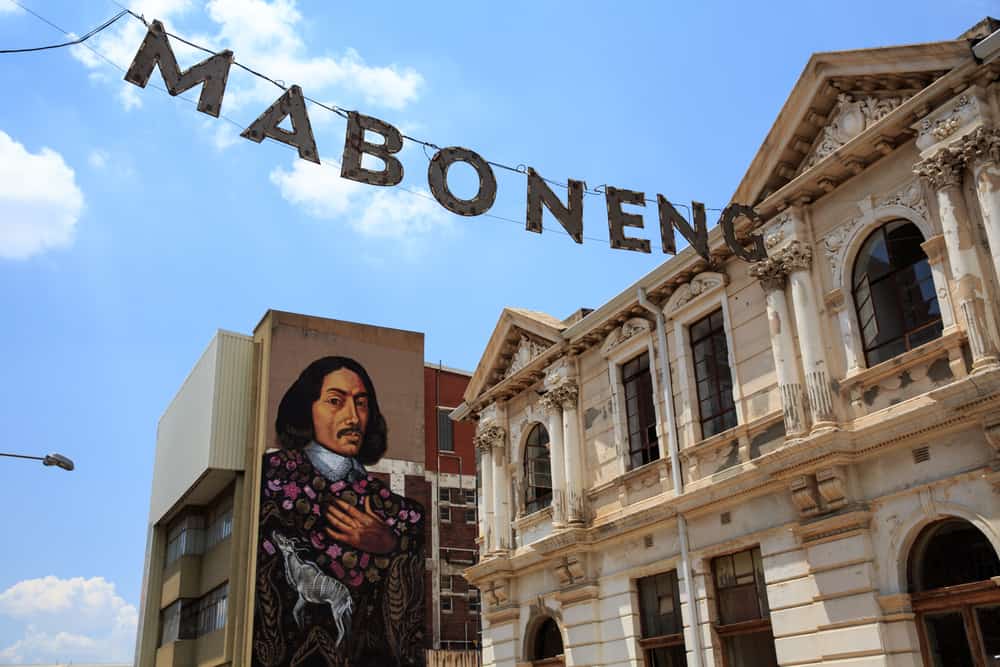 Source: Gil.K / shutterstock
Source: Gil.K / shutterstockHeralded as one of the most successful regeneration programs in the world, today’s Maboneng Precinct is awash with cool things to see, do, and taste. A destination par excellence for lovers of all things artistic, street art brightens the area’s thoroughfares while Art on Main is home to various studios.
Along with Main Street, its Fox Street which is the heart of the neighborhood, and it’s here you’ll find no shortage of trendy coffee shops and cafes. Nightclubs take up the slack from late evening onwards, particular on Saturday night, when Maboneng is undoubtedly the place to head for a good time. Stay awake long enough, and you can even turn your attention to Sunday’s Market on Main, at Art on Main.
9. Museum Africa
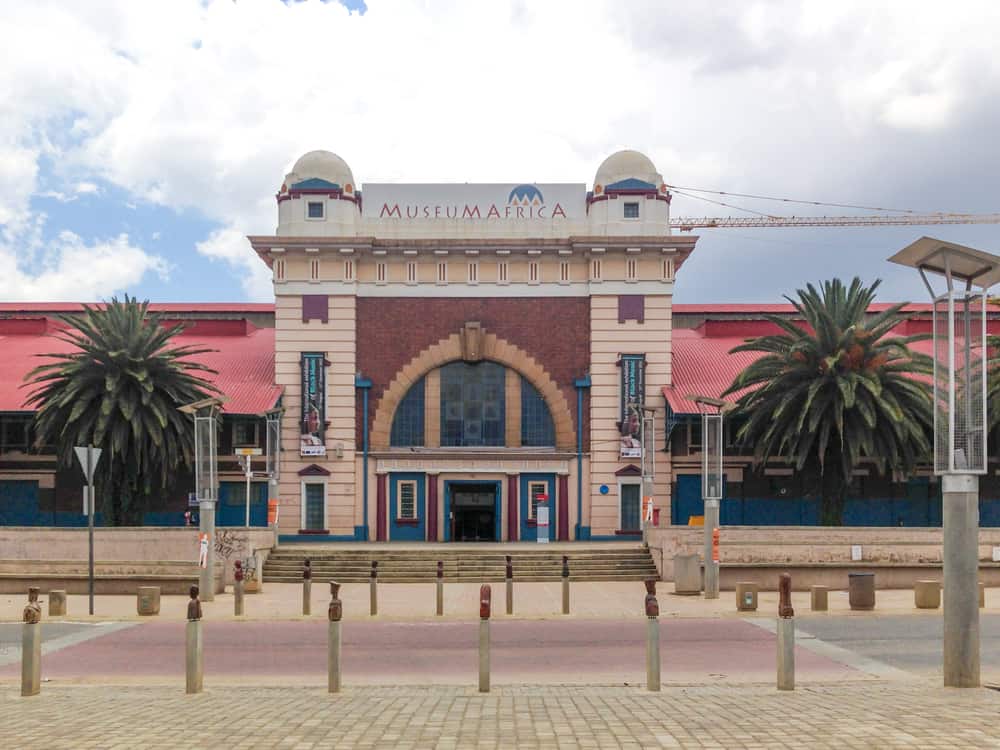 Source: Felix Lipov / shutterstock
Source: Felix Lipov / shutterstockTaking up the whole of one side of Mary Fitzgerald Square, Museum Africa occupies a fruit and vegetable market building constructed in 1913. Its remit is to cover the cultures of the entire continent. It does this through its displays of musical instruments, masks, traditional clothing, and other items.
But Museum Africa also contains an image-based exhibition highlighting the changing face of Johannesburg over the ages. Additional exhibitions go into the Rivonia Trail which saw Mandela imprisoned for 27 years, and the history of photography in South Africa.
10. Gandhi Square
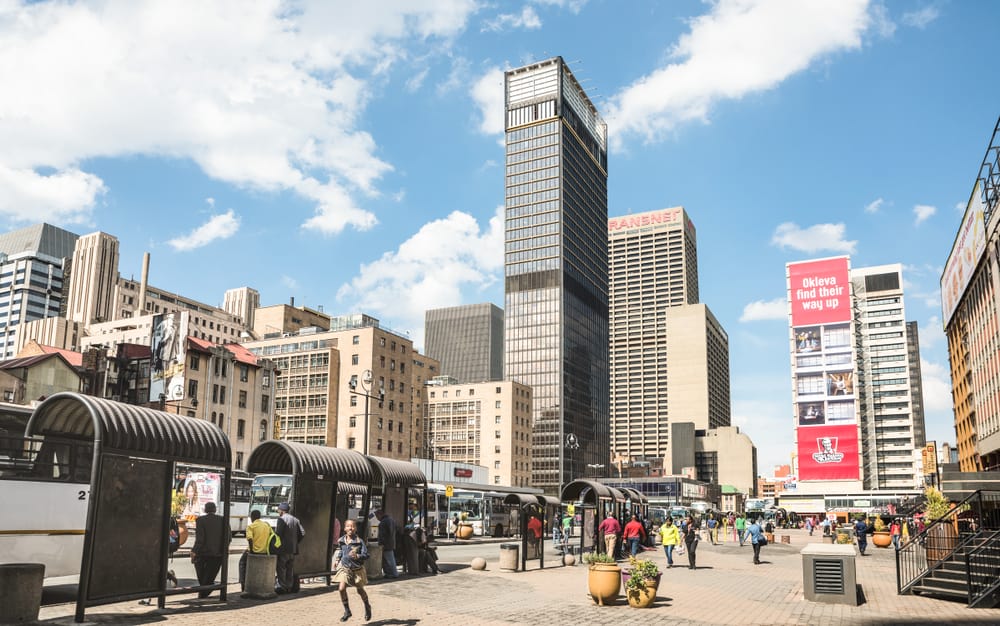 Source: View Apart / shutterstock
Source: View Apart / shutterstockSituated in Marshalltown, an area of shining office blocks belonging to the big banks, Gandhi Square is a large plaza named after the Indian activist – a lawyer in Johannesburg early in his life. Once incredibly down at heal, the regeneration of the square has seen shops and cafes return to this important location.
It was here, when known as Government Square, that Afrikaner Boer forces surrendered to the British military to end the siege of the city in 1900. On the edge of the area a number of beautifully designed heritage buildings have avoided the onslaught of the modern tower blocks.
11. National Museum of Military History
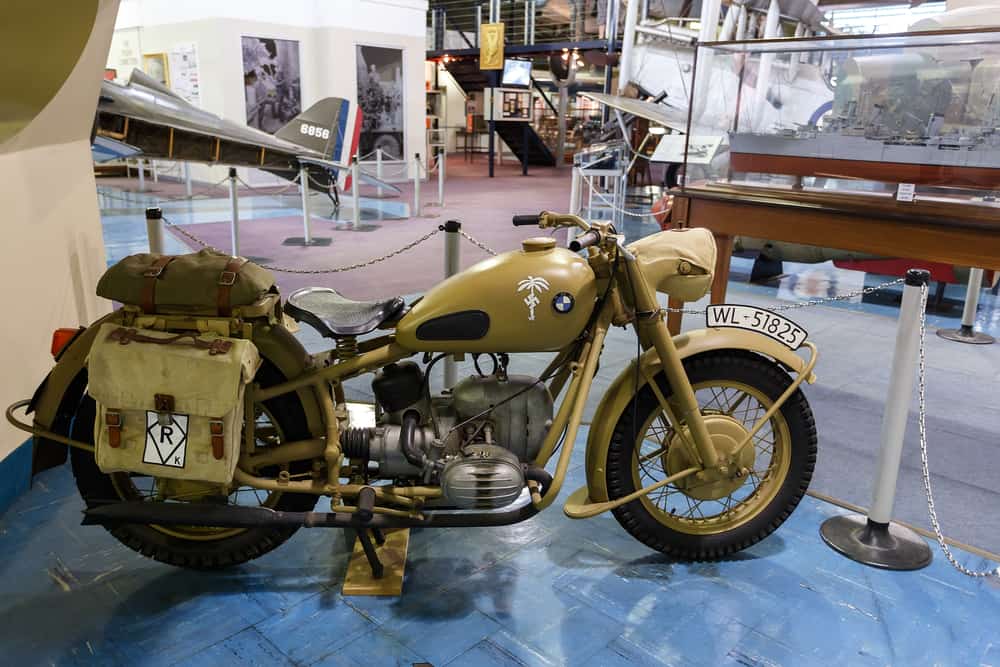 Source: Artush / shutterstock
Source: Artush / shutterstockThis is a large museum consisting of indoor and outdoor exhibits detailing the role of the South African military throughout the country’s sometimes turbulent history. Its vast array of items on display include multiple tanks, and aircraft, including historic planes such as a Spitfire and Messerschmitt 109, both from World War Two.
Together with smaller objects, the collection records the involvement of the South African armed forces from the Anglo Boer Wars of the early 1900s to the free elections of 1994. Its grounds also contain the impressive Anglo Boer War Memorial designed by Sir Edwin Lutyens.
12. Braamfontein
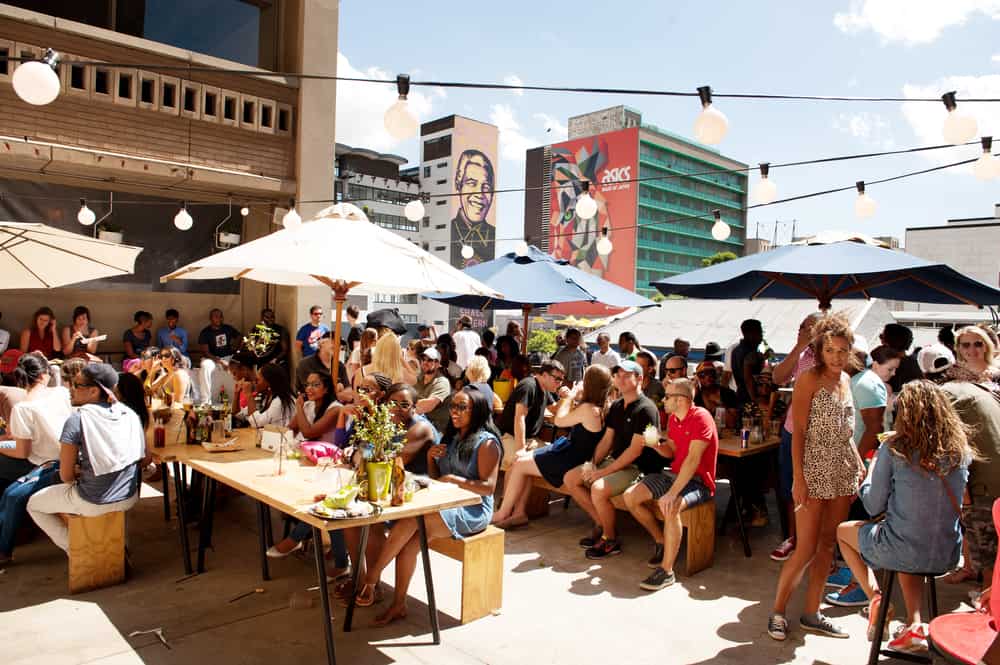 Source: David Buzzard / shutterstock
Source: David Buzzard / shutterstockWith two major universities nearby, you can be sure there’s always something interesting going on in Braamfontein. A fashion and music hub, the weekend is usually the best time to visit this part of Johannesburg, since students are free of their lectures.
Things to do include the ‘Neighborgoods Market,’ which started in Cape Town before spreading to Jo’burg. Here visitors and locals alike can peruse two floors of clothing, food, and drink. The rooftop bar makes the most of the location. Not far away there are more traditional stores sharing the latest in cool, as well as a rooftop farm.
13. The Wilds
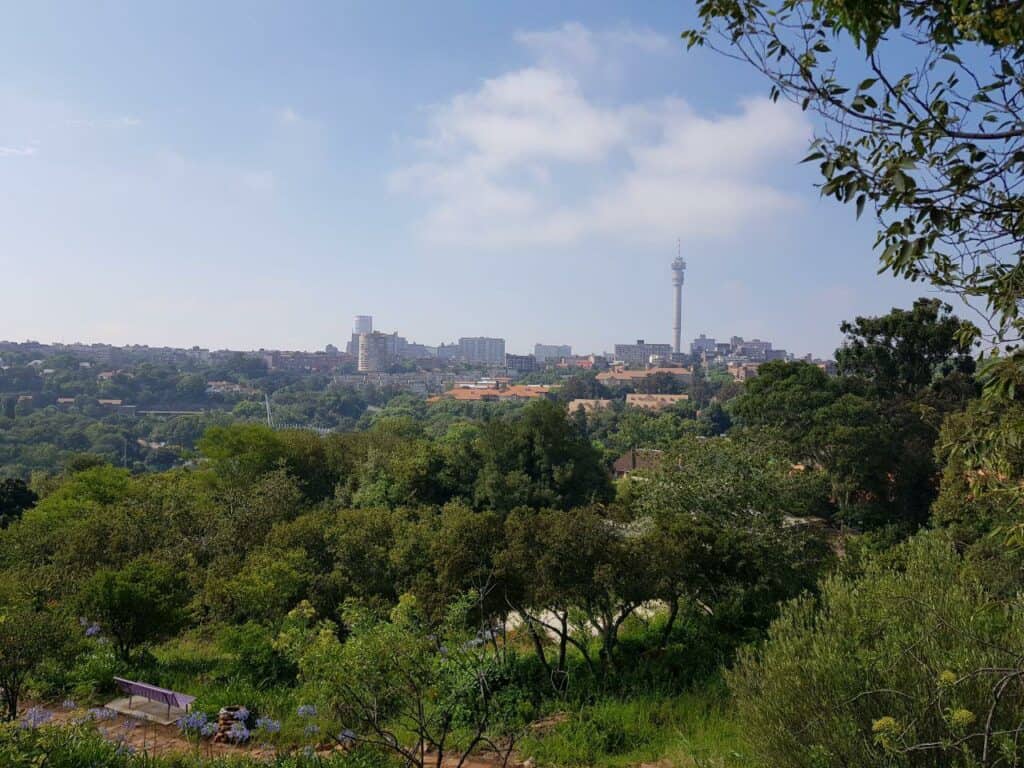 Source: George Thomas Stevenson / Wikimedia | CC BY 4.0
Source: George Thomas Stevenson / Wikimedia | CC BY 4.0The Wilds is an inner-city park and nature reserve in the Houghton neighborhood of Johannesburg. Sixteen hectares in area, it encloses two koppies, or rocky hills, which provide attractive views back to the center of Jo’burg.
However, the main attraction of The Wilds is its artworks, largely comprising brightly-colored laser cut animals created by local artist James Delaney. They began with an owl forest, containing almost 70 of the birds. The various artworks can be seen thanks to eight kilometers of paths cutting through largely indigenous flora.
14. Hop-on Hop-off Bus
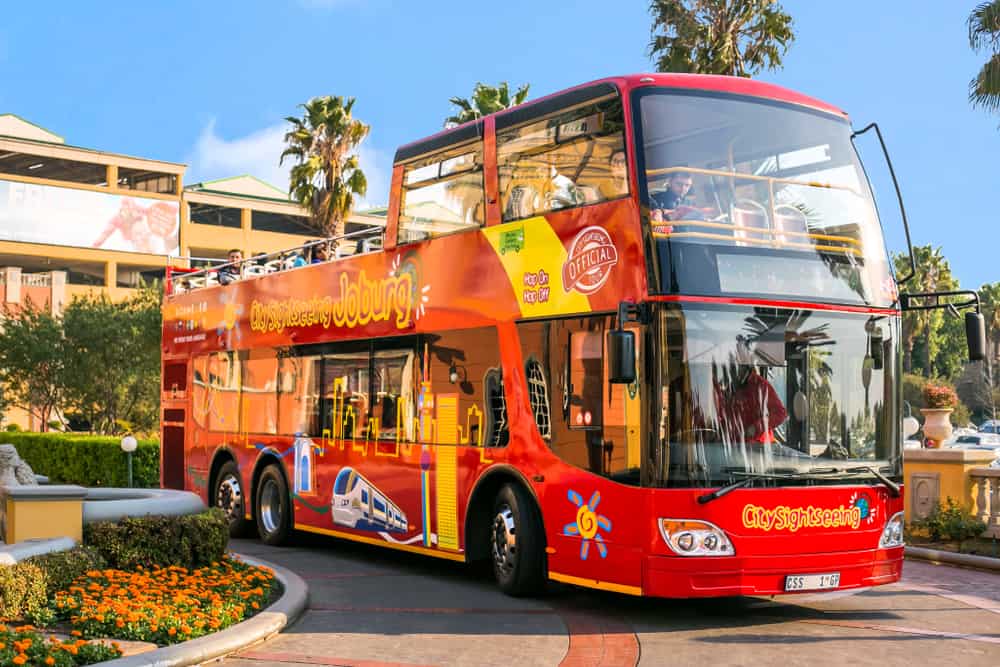 Source: Rich T Photo / shutterstock
Source: Rich T Photo / shutterstockA regular sighting in cities the world over, Johannesburg’s hop-on hop-ff tourist buses shouldn’t be discounted. This is especially true given the size of the city if you’ve only got a few hours going spare.
They tend to run on two different routes, with one sticking to sights within the center of the city and the other going further afield. Commentary provides a little background to what you’re seeing – aim for seats on the open top deck if the weather is good.
If nothing else, these buses are a great way of getting to the Apartheid Museum without your own transport.
15. Wits Art Museum
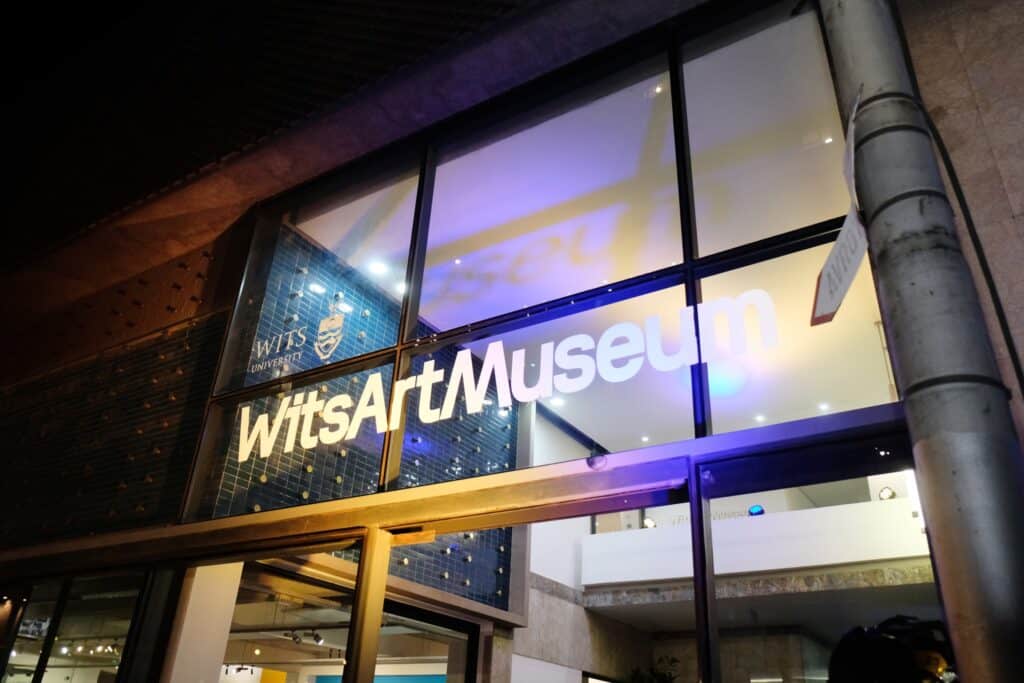 Source: Wits Art Museum / Facebook
Source: Wits Art Museum / FacebookThe architecturally stylish Wits Art Museum came into being in 2012, making it one of Johannesburg’s newest attractions. Boasting 10,000 individual works of art, the gallery’s 5,000 square meters of exhibition space contains a tightly curated selection of both traditional artworks such as carvings, and contemporary creations.
The crisp white interior really makes each of the objects on display sing, whether that’s modern South African photography, fabrics, watercolors, or sculpture.
